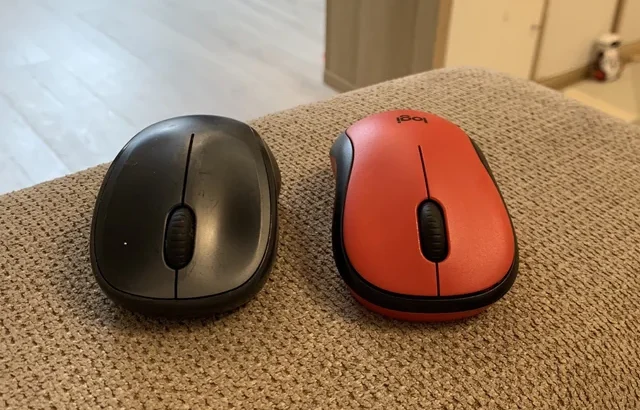Pilates Pila – Walk into any gaming store today, and you’ll see rows of flashy, high-tech mice boasting 20,000 DPI sensors, RGB lighting, and futuristic designs. But what if we told you your old Logitech MX518 from 2005 might actually outperform these expensive new models where it truly counts? new gaming mice While manufacturers push specs that look impressive on paper, many modern gaming mice have quietly sacrificed the core qualities that made older models legendary. From durability to sensor accuracy, the gaming mice industry has been going backwards while convincing players to pay premium prices for inferior products.
The truth is, today’s gaming mice suffer from planned obsolescence, gimmicky features that hinder performance, and sensor technology that’s actually less reliable than what we had nearly 20 years ago. Professional esports players have started noticing too many are dusting off ancient mice or modifying new ones to recreate that perfect feel. Let’s break down exactly why new gaming mice are secretly worse than 2005 models, and what you can do about it.
The Myth of Higher DPI Numbers
Every new gaming mouse brags about its astronomical DPI (dots per inch) rating 16,000! 20,000! 32,000! But here’s the dirty secret: anything above about 3,200 DPI is completely useless for actual gameplay. Those ultra-high DPI numbers are pure marketing fluff designed to impress inexperienced buyers.
In 2005, mice like the Microsoft IntelliMouse 3.0 topped out at 400-800 DPI, yet dominated professional gaming tournaments. Why? Because their sensors delivered perfect 1:1 tracking with zero acceleration or smoothing something many modern sensors struggle with despite their fancy specs. Today’s sensors often introduce subtle input lag from unnecessary processing, all to achieve DPI numbers no human could possibly use effectively.
The Build Quality Downfall
Pick up a well-preserved gaming mouse from 2005, and you’ll immediately notice the difference in weight and sturdiness. Older mice used thicker plastics, metal scroll wheels, and Omron switches rated for 10 million clicks. Modern “premium” mice often use cheaper materials despite higher price tags, with switches that start double-clicking within months.
The legendary Logitech G5 from 2005 could survive being thrown across a room and still track perfectly. Today’s lightweight honeycomb-shelled mice? One drop onto a hard surface often means game over. Manufacturers realized they could save money by making products less durable while convincing gamers that “lightweight” equals “better performance.”
Sensor Performance: Progress or Regress?
While modern sensors technically have higher specs, many introduce subtle issues that didn’t exist in older models. The flawless Microsoft IntelliEye sensor from 2001 still outperforms many budget gaming mice today in terms of consistent tracking. New sensors often suffer from:
-
Motion delay from smoothing algorithms
-
Angle snapping that messes with muscle memory
-
Inconsistent lift-off distance
-
DPI deviation (where 800 DPI isn’t truly 800)
Professional Counter-Strike players have noticed this decline. Many still hunt for New Old Stock (NOS) versions of the Microsoft Wheel Mouse Optical 1.1a—a model discontinued in 2006 because its sensor provides more reliable tracking than most modern alternatives.
The Shape Problem
Ergonomics took a backseat to flashy designs in recent years. Iconic shapes like the Intellimouse 3.0 or Logitech MX500 were perfected through years of testing. Today’s mice often prioritize looking “gamer-y” over actual comfort for long sessions.
Worse, many companies now make mice intentionally uncomfortable to force you into claw grip positions, reducing long-term usability. The market has largely abandoned the palm grip designs that made older mice comfortable for work and play.
Software Bloat and Driver Issues
Remember when mice just worked when you plugged them in? Modern gaming mice often require bloated software to change basic settings, introduce firmware bugs, and sometimes even reduce performance until “optimized” through their apps.
Many 2005 mice stored settings directly on the device. Today’s models frequently reset to defaults if used without their software running, a deliberate choice to keep you dependent on the manufacturer’s ecosystem.
The Right-To-Repair Disaster
Older mice were designed to be serviced you could easily replace mouse feet, switches, or even the entire cable. Modern mice increasingly use:
-
Glued feet that ruin the surface when removed
-
Soldered switches that can’t be replaced
-
Proprietary screws to discourage opening
-
Non-standard connectors
This planned obsolescence means your 150″premium”gamingmousebecomestrashwhena0.50 switch fails—something that would have been a five-minute fix on older models.
What Gamers Can Do About It
Thankfully, there are ways to get the best of both worlds:
Seek out modern mice using older sensor designs (like the PixArt 3360)
Learn basic soldering to replace switches on newer mice
Buy from companies still making serviceable designs (like Zowie)
Consider modding older mice with modern cables and feet
Avoid mice prioritizing RGB over build quality
The Mouse Industry’s Dirty Secret
The decline in gaming mouse quality isn’t accidental it’s profitable. By making products that fail faster and prioritizing flashy specs over real performance, manufacturers ensure you’ll keep buying new models every year. Meanwhile, those “outdated” 2005 mice keep working perfectly decades later.
Until consumers demand better, the trend will continue. But armed with this knowledge, you can avoid the traps and find mice that actually improve your game rather than just your setup’s aesthetics. Sometimes, the best gaming gear isn’t what’s newest it’s what’s proven.



